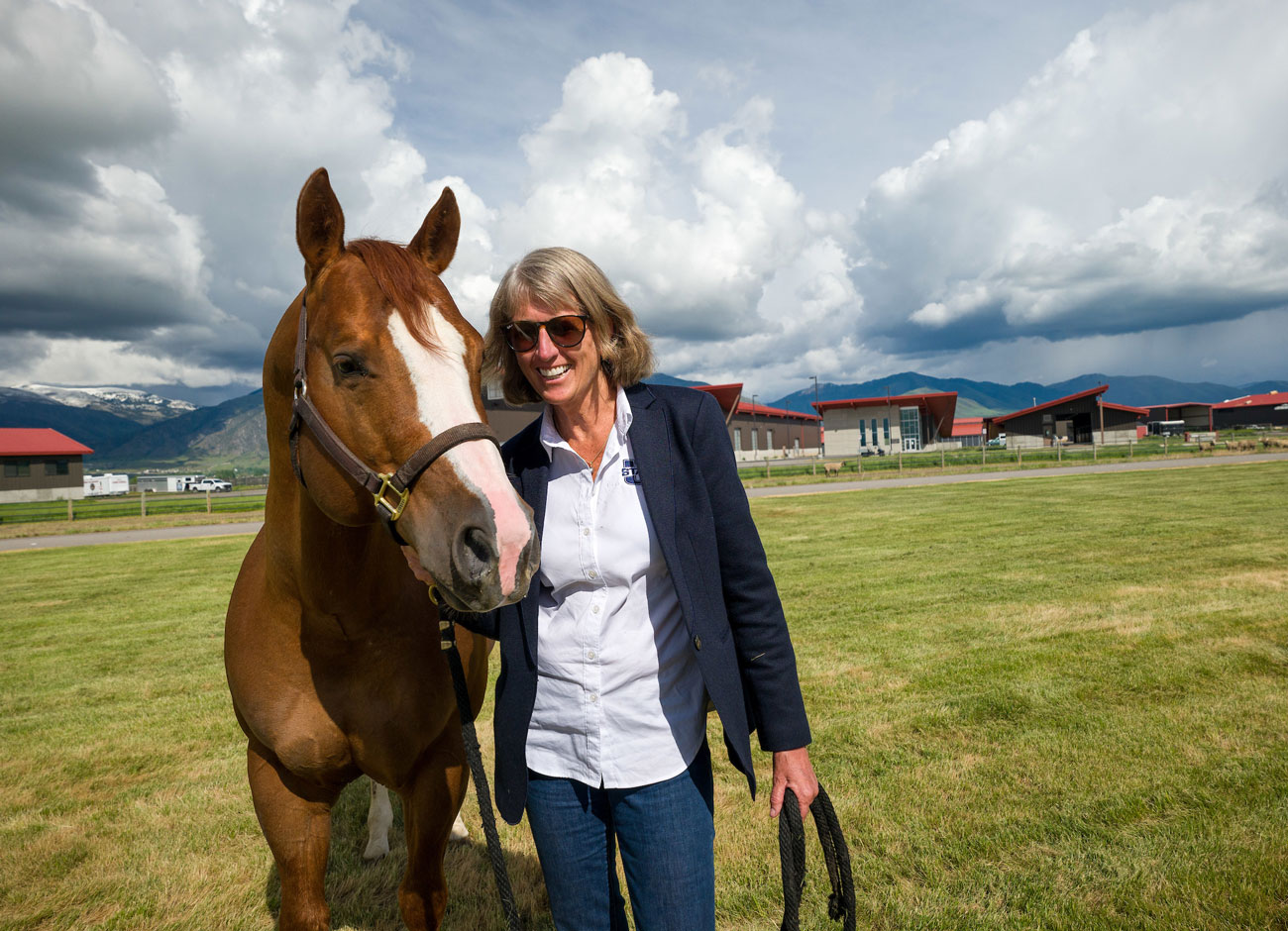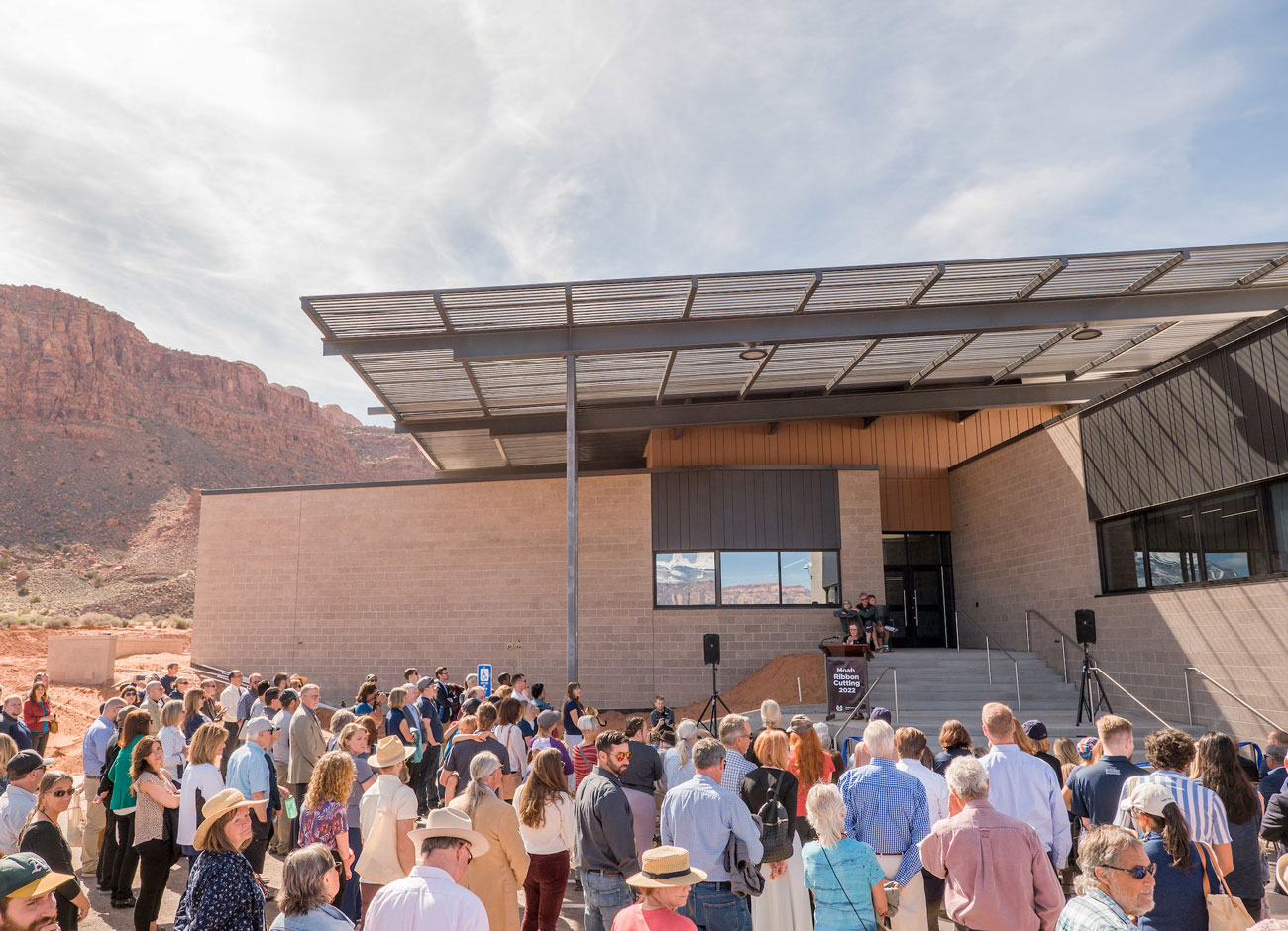Designing His Life: Bibhu Mohapatra Finds His Path
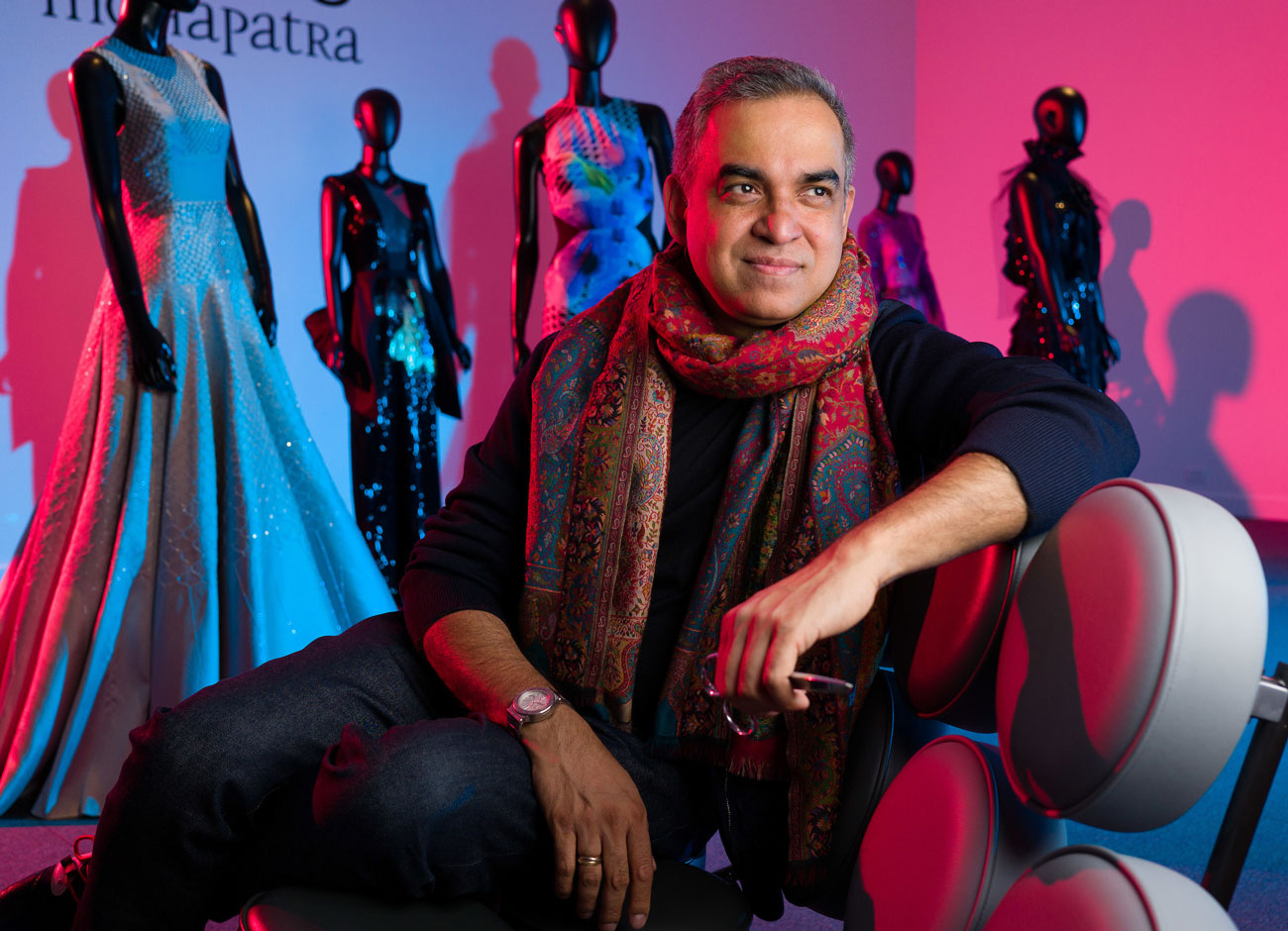
Bibhu Mohapatra ‘98 is wearing black again.
The same zip-up jacket the fashion designer sported during a visit to Logan a week ago. Now, back at work in New York City, Mohapatra is preparing for seasons the rest of us won’t live for months. But he is there. In the future. Thinking about it, even if we aren’t.
But he is also in the present. Witnessing states debate laws that impact gay and transgender youth — and it can be hard for him to watch. Mohapatra is gay. He emigrated to the United States from India in 1996 to attend graduate school at Utah State University. And like many immigrants, he felt pressure to make the most of his opportunity.
“When I was there, my personal life was put away somewhere,” Mohapatra says. “I was very focused in my studies and finding my path.”
He got his first job as a custodian at Utah State University’s University Inn, a position he held for nine months, working evenings from 5 to 9 p.m., squeegeeing windows, cleaning toilets, shoveling snow, and vacuuming carpets for guests who floated in and out.
Walking past the mirrored windows can have a startling effect if you look up and don’t expect to see yourself reflecting back. Sometimes you catch your expression and think: is that me?
*
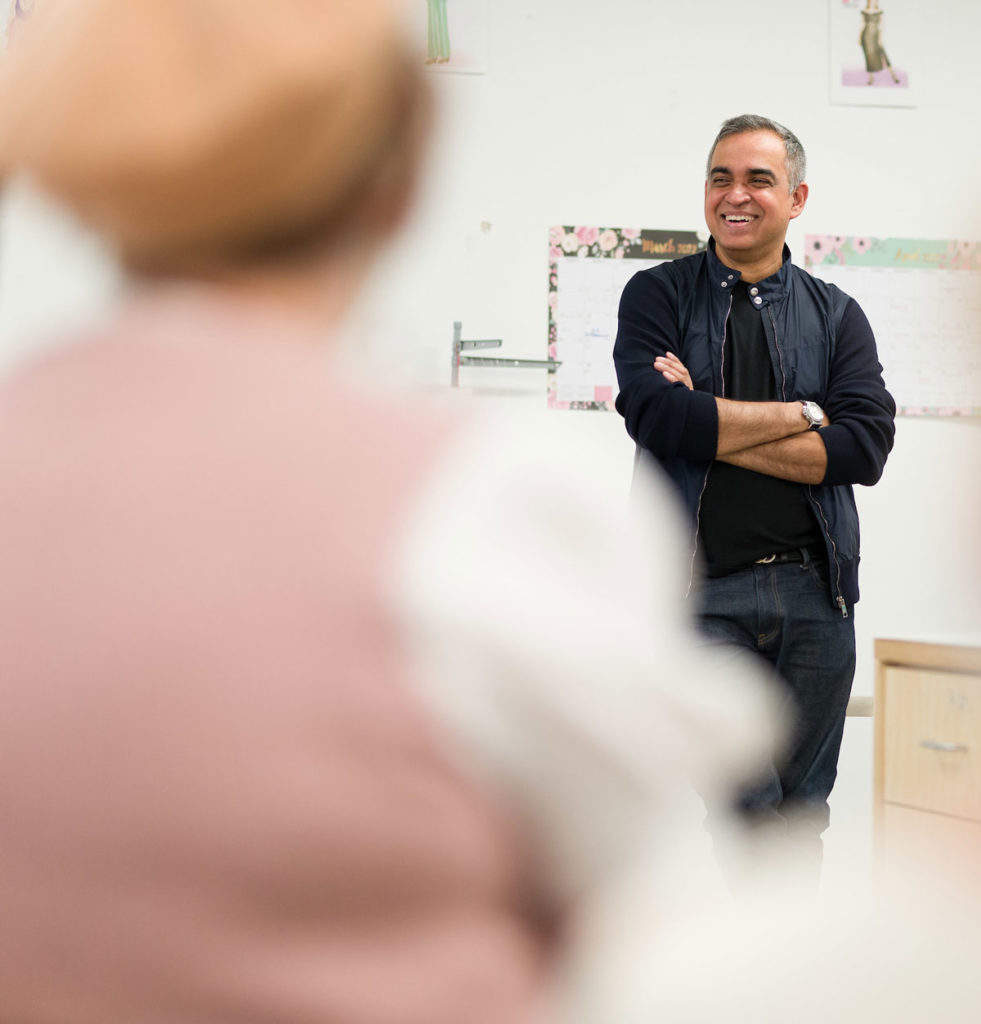
“I am still processing the visit,” Mohapatra says. “I have lots of thank you notes to write.”
Time is a slippery thing. Like memories. Nearly a quarter century has passed since Mohapatra lived in Logan and assembled the application that would change his life. So much has changed about the campus that he had to walk several loops around before getting his bearings. And yet, he felt like no time had passed since he first arrived to the United States — hugging his two suitcases filled with clothes and spices he feared hadn’t made it onto the plane. It was his first flight. He didn’t know what to expect.
“Before I landed, America was 4×6 photographs,” Mohapatra says.
The glossy prints his brother sent from trips to places like Six Flags or that his cousin Sarita Ph.D. ’97 snapped of her first apartment in Logan offered a glimpse into the unknown.
“America was what their world was,” he explains. “But nothing compares to really landing — especially landing in Salt Lake City, with the mountains, and looking down at just this beautiful, beautiful world that was welcoming me.”
It was an auspicious start. He traded the monsoon rains of Odisha for snow he swiped to his mouth for the first time. Memories are a playback reel that keep us tethered to places we no longer live. The textiles, temples, and food of Odisha were things Mohapatra took for granted because that was home and it often takes leaving it to recognize the loss.
Those were the “foundations of my creative thinking,” he said March 23 during a talk at the Jon M. Huntsman School of Business’s Entrepreneur Leadership Series. “That is my library of creative resources I fall back on. And by default, they come back out as I am sketching something or putting fabrics together and colors together.”
Mohapatra’s designs often incorporate bright hand-woven silk and ikat fabrics from Odisha’s artisans, including the costumes he designed for the Washington National Opera’s first production after it closed for two years during the COVID-19 pandemic. “Come Home: A Celebration of Return” was a tribute to former Supreme Court Justice Ruth Bader Ginsburg, an opera lover who frequently attended shows at the Kennedy Center alongside her ideological opposite and longtime friend Justice Antonin Scalia.
“She would especially pay attention to young artist groups because she wanted to make sure that they knew that they had her support — that’s thinking,” Mohapatra pauses. “For her, it was probably a small thing, but on the other end it was a big thing for all these artists.”
The experience was the first time he stood in a room with so many Supreme Court justices, Mohapatra says smiling. “It was quite something. I was truly honored and humbled.”
It also drew a long line back to his days building extravagant costumes for USU theater productions. In the decades since graduating, Mohapatra has never forgotten his Utah roots, either.
*
Coming to USU to pursue a master’s in economics was the first step in Bibhu Mohapatra’s pursuit of a creative life. He just wasn’t certain exactly what or how.
Making art with fabric and embroidery was something he learned as a teenager from his mother Sashikala. Mohapatra believes she recognized his interest and encouraged it, quipping “Go crazy” after stepping away from her sewing machine. She supplied him with bedsheets and old saris and eventually commissioned him to design a dress for his sister for a wedding reception.
“Usually as a young person, something catches your attention and if there is not development in the interest then you just move on to something else, which is very normal,” he says. “And I am sure I had plenty of those. But this one stuck.”
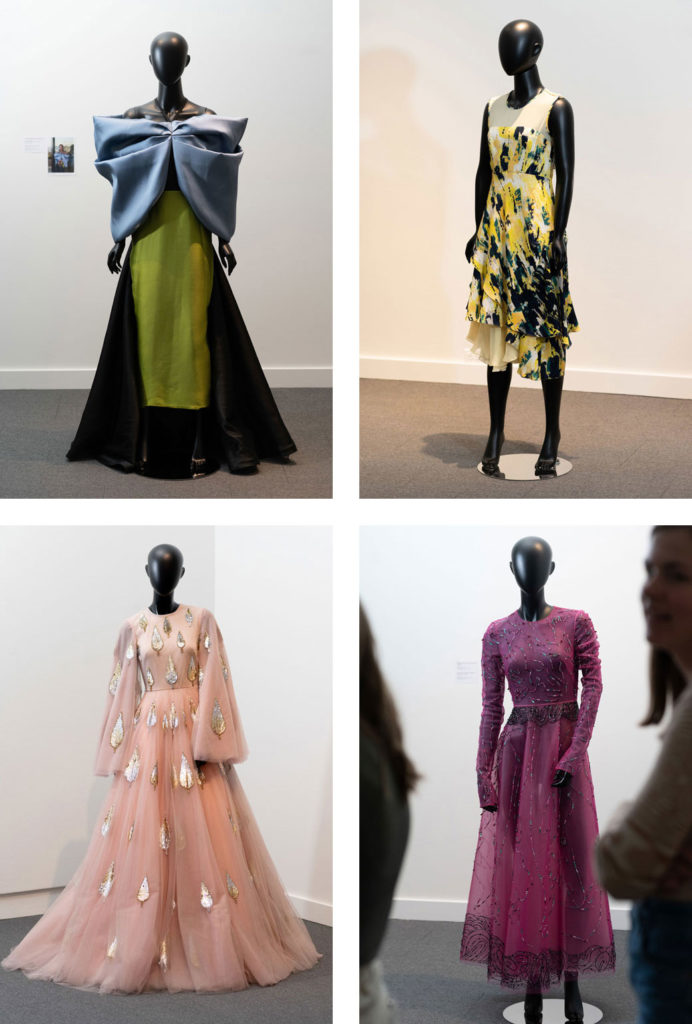
Dozens of iconic dresses by Bibhu Mohapatra were on display at the Nora Eccles Harrison Museum of Art in March. The yellow and black print dress (upper right) was worn by former First Lady Michelle Obama. The bright pink beaded gown (lower right) was inspired by a painting Mohapatra’s partner Bobby Beard created.
Sashikala taught him to appreciate craft, to make clothes well, and that they can communicate something powerful. The dress Mohapatra created for his sister — a black and gold brocade with yellow chiffon — and the assured way she first walked into the room still looms large. It was the moment he realized what clothes can do for a person’s confidence and that he could be the source of that creation. But Mohapatra also knew he couldn’t abandon his academics.
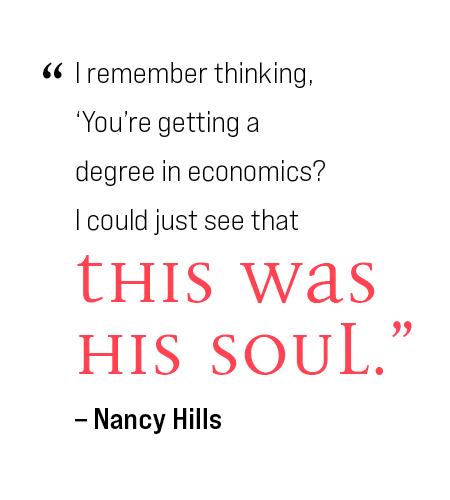
“Being from an Asian culture, no matter what, you have to do well in math,” he jokes. “To do well in math, you have to be in school, and if you’re in school, you better study everything.”
While he loved fashion, he didn’t see a route for formal training in India and earned a bachelor’s in economics. His cousin Sarita was earning her Ph.D. in economics at USU and thought he could figure out his path from Logan. He didn’t have a plan B.
The first nine months Mohapatra assisted professors with research projects, analyzing spreadsheets, sketching fashion designs in class, and cleaning the University Inn at night — a job that developed the work ethic he applies today in the high-end fashion world.
“That job taught me how important it is to take whatever you do with great pride and do the best job that you can,” Mohapatra said at the talk. “And creating that culture of my company, that [experience] was very helpful.”
Initially at USU, Mohapatra was surrounded by a community of business and international students, many of whom were engineers or computer scientists. Nevertheless, he felt his internal compass pulling him from the stability offered in more traditional careers in the direction of creative work. Eventually, the right people noticed. Mohapatra’s business professors suggested he switch to a master’s in fashion merchandising to advance his talent. Jeanette Arbuthnot Derry, an associate professor of home economics and consumer education, saw his sketchbook and brought him two brochures for fashion schools the next day.
“Some days I would feel like ‘I am going to really work hard and put together that portfolio and apply,’” Mohapatra says. “But then I would be like ‘But how am I going to pay for it?’ And that would be a damper.”
His cousin Sanjeev Misra M.S. ’96, suspects Logan was an ideal spot for Mohapatra to contemplate his next steps. We came from little satellite towns where the biggest thing would be a steel company that the whole town grew around, Misra says. “So, Logan was a really good transition for us. I think from [India] to New York it would have been a big shock.”
Even so, he admits to being apprehensive about the idea of Mohapatra going into fashion.
“His family background and our family background, our friends, our social whole structure, nobody was in that field so it was kind of a big unknown,” he explains. “We knew other more traditional career paths. So, we were all worried what is going to happen? Is he going to be able to support himself 10 years down the road? But we encouraged him as much we could.”
He smiles.
“I think he did alright for himself.”
*
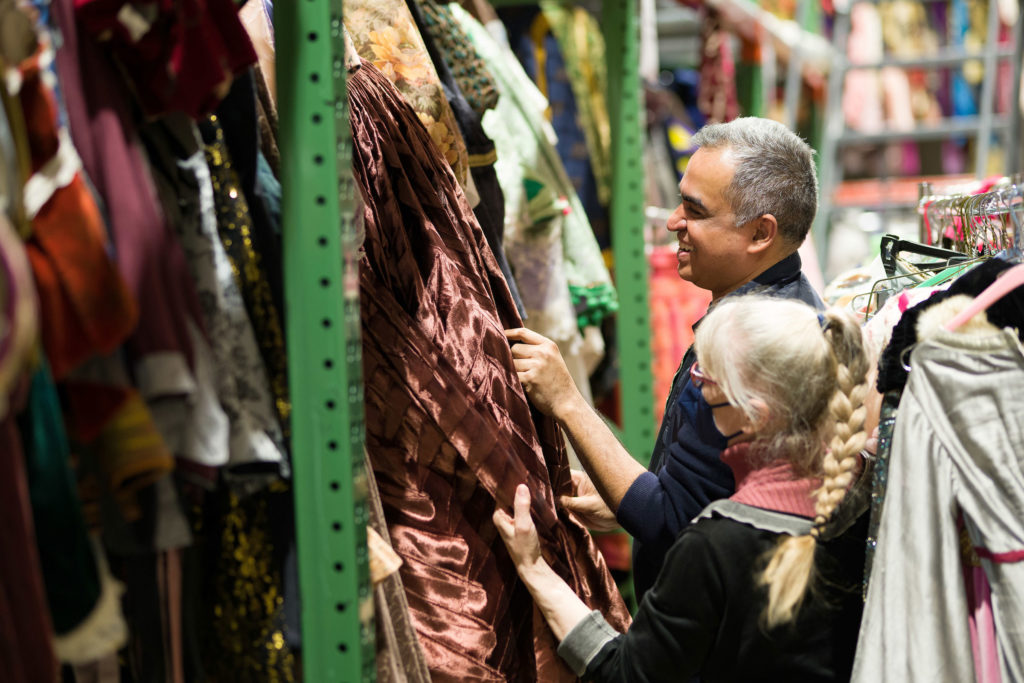
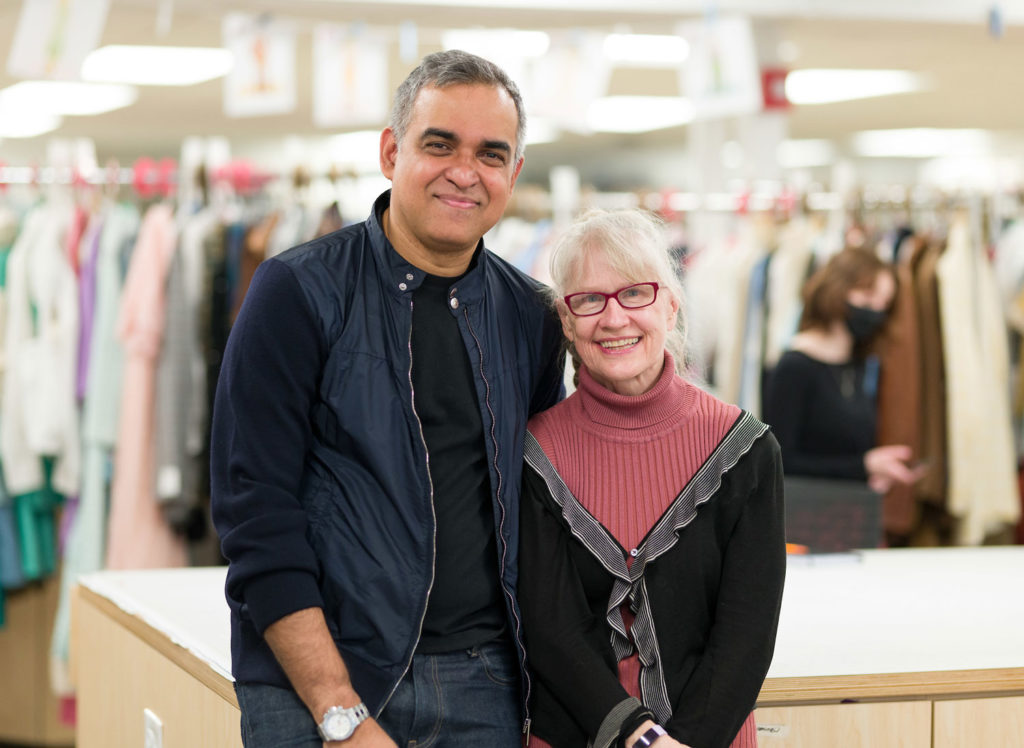
Nancy Hills, professor of costume design, recalls the day a young Indian man came into the costume shop on campus to apply for a work study job. Most students who applied for these positions came from home economics — not economics.
“I can sew,” Mohapatra promised.
And sew he could. Hills hired him to build costumes for a production of Cyrano de Bergerac, creating dresses with lacy bodices and sweeping skirts. The pieces required detailed finishing and finesse. Not only was Mohapatra very kind and curious (and quiet), she says, but he excelled at everything. “He ended up building some beautiful garments for the character Roxane. We make our own patterns. We draft everything ourselves.”
Hills recognized passion when she saw it. “I remember thinking, ‘You’re getting a degree in economics?’ I could just see that this was his soul. His absolute love was these extraordinary garments he was working on.”
She isn’t surprised that Mohapatra found his way to couture fashion. While it’s different from working to visually personify what is happening on stage, both fields require manipulating and communicating with cloth — and the ability to tell a story.
Working in the costume shop reinforced the skills Mohapatra learned from his mother and enabled him to build a portfolio. It also allowed him to imagine a career not paved with spreadsheets (although Mohapatra still uses them to understand sales).
“It made me connect to a whole different world,” he says. “It also gave me the confidence that I can put something together [for the stage.] So, that was a very, very important chapter of my making of little confident Bibhu … I would not trade that for anything.”
Soon, Mohapatra had a portfolio he felt okay about submitting to fashion school, save for one element of the application: designing an outfit for the First Lady of the United States. It was a daunting task. Ultimately, his design was good enough for the Fashion Institute of Technology, and, in 2015, it was good enough for First Lady Michelle Obama, who wore one of his dresses during the administration’s first visit to India. Mohapatra would dress her several more times and during one of the final parties at the White House before the Obamas left office, he told her about applying to design school and the challenge of envisioning dressing the First Lady. He thanked her “for making my American dream come true.”
“But I also told myself that this is the America I came to,” Mohapatra told an audience March 24 at the Nora Eccles Harrison Museum of Arts. “This is where you can work hard and believe in yourself, and as long as you have the tools to turn the corner or get out of that ditch and stay committed to your passion, it can happen. I think I am also very lucky to have people who guided me through.”
Dwight Israelsen ’69, professor emeritus of economics, met Mohapatra within a day of his arrival to the United States and has stayed in touch with him ever since. Mohapatra was part of a string of exceptional graduate students in economics, beginning with Sarita, Israelsen says. “I taught economics for 50 years at MIT, BYU, Harvard, and then at USU for about 40 years, and I don’t think there was a better group of graduate students that I taught anywhere than the Mohapatra cousins and the other students that were there at the same time.”
Bibhu, he remembers, was shy, very nice, and clearly very talented. While he did well in economics, his love was fashion and Israelsen wasn’t disappointed when Mohapatra moved away from the field. “I celebrate what he has been able to do.”
Over the years, he has noticed a change in Mohapatra — growth.
“He knows who he is,” Israelsen says. “He is happy with it. He is comfortable in any situation.”
The other thing that impresses Israelsen about Mohapatra? He has stayed the same.
“He’s a really famous guy in fashion circles — look at who he makes dresses for — but he is humble,” he says. “He knows where he came from, he knows if he had help along the way and he appreciates it, and he’s never let his success change him … He’s the same person that he was the first time I met him.
People say somebody has risen above their roots. He hasn’t forgotten at all. You see it in his designs, right? Now the influence is very heavy in his fashion designs and his heart is still there. But part of his heart is here.”
*
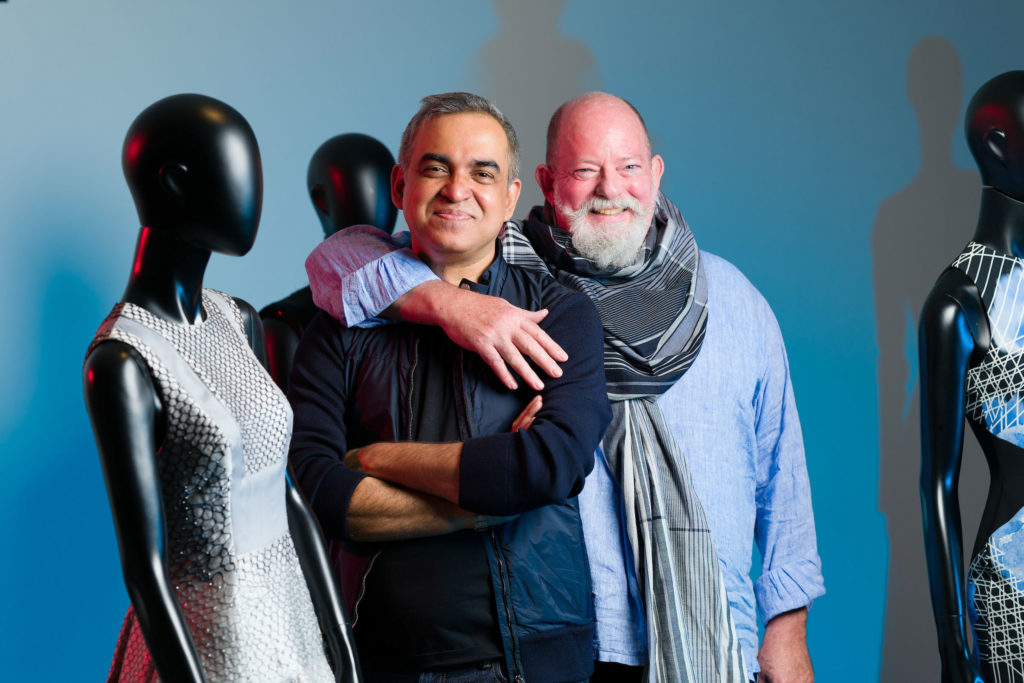
These days, Mohapatra smiles easily. He can tell a self-deprecating joke and deftly command a room. Some of the biggest names in Hollywood have worn his label, including Jennifer Lopez, Priyanka Chopra, and Glenn Close. The Queen of England invited him to dinner. Mohapatra is in the comfortable position one hopes to be at 50 where they get to pare back what doesn’t serve them to make sure each day is spent with the people and things that nourish our souls — particularly after the time lost to COVID-19.
“We had a massive loss last year,” he says. “My eldest brother [Bijaya] who was very close to Sarita, we lost him to COVID. He was 58 years old. … We were a pack of eight, now we have only seven.”
Spending time with loved ones and friends often takes a priority now — even if it means taking three nights to watch one film because a group family chat is live and they won’t let you ignore the call. “I am not going to waste my time on anything that would not give me that satisfaction of being with a friend or a family member,” Mohapatra says.

But he was already unburdening himself from the unnecessary even before COVID. Mohapatra has already walked through the fire.
He launched his label in 2008 during a global financial downturn. One order for three $50,000 coats kept the company afloat its first year and allowed the experiment to continue. In 2017, he filed for bankruptcy to restructure his company after being unable to shake debts incurred from the brand’s nascent days. Before starting his label, Mohapatra spent nine years as the design director for J. Mendel, honing his craft and learning the business. He learned how to build a successful team and when to walk away from it. By 2010, Mohapatra joined the ranks of the Council of Fashion Designers of America.
And after filing for bankruptcy, he spent a year restructuring the company and emerged on better financial footing. Vogue described his 2020 ready-to-wear collection as having “a new and refreshing airiness to his work” despite being inspired by Nothing Personal, a book by Richard Avedon and James Baldwin that explores the complex aspects of American identity. Mohapatra told the publication he wanted to show “what I really bring to the table. I decided not to get bothered by what is expected of me so much.”
After COVID, he resurfaced with most of his team intact and seems to be shedding any manacles that remain.
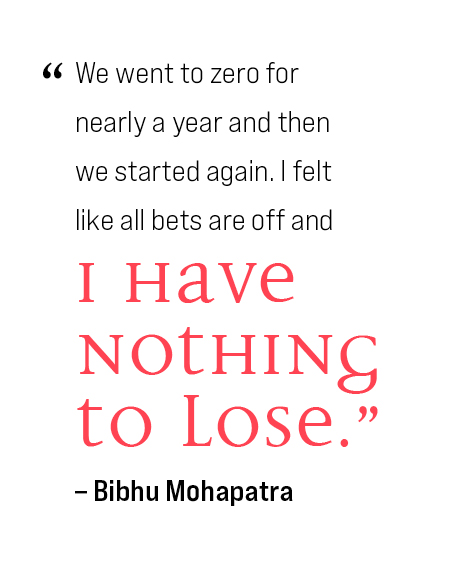
“We went to zero for nearly a year and then we started again,” Mohapatra says. “I felt like all bets are off and I have nothing to lose. … And even know, the way I make decisions about business I am not pressured by ‘Oh, this is the norm’.”
While he often says that he “holds his failures closer than his successes,” Mohapatra keeps his loved ones closest.
“Their acceptance of me empowered me,” he says.
It wasn’t until Mohapatra was living in New York City and met his future husband Bobby Beard, an artist, that he made a late-night phone call. His cousin hung up and dialed him back with Sarita, his brother, and cousin Sanjeev Misra on the line. Misra remembers it well.
“Most of us knew, but we wanted to give him the space to be comfortable to come out,” he says. “I think every person has this fear of ‘How are they going to react?”
“I am lucky to have that support,” Mohapatra says. “It could very easily have been a disaster. But I was lucky and that allowed me to feel that I am true to myself. And that is the basic foundation of the mind, of the human being, to have solid footing on the ground. Then I could think about next is my career, next is my education, next is my making differences, my community. But if I am standing on shaky ground all of those things I just mentioned, they become weaker. So, it is super important to acknowledge that and for me to voice that it is important to have that support from your family … when you make them come to terms with who you are.”
Misra agrees that family support is an integral part of the equation, but he credits Mohapatra’s partner, Bobby, as instrumental in Bibhu expressing his true self.
“He would reassure him that it’s okay,” he says. “Even 5-6 years back Bibhu wouldn’t post certain things on social media, thinking that his old friends or someone in India wouldn’t like that or wouldn’t understand. But Bobby was always there to support him and kind of goad him a little bit.”
Mohapatra is concerned about gay and transgender youth who don’t have the support of their families. His advice for people who may find themselves in this unfortunate space: “Hang on. Don’t give up no matter how tough it is. Have the courage to face yourself and really accept who you are.”
*
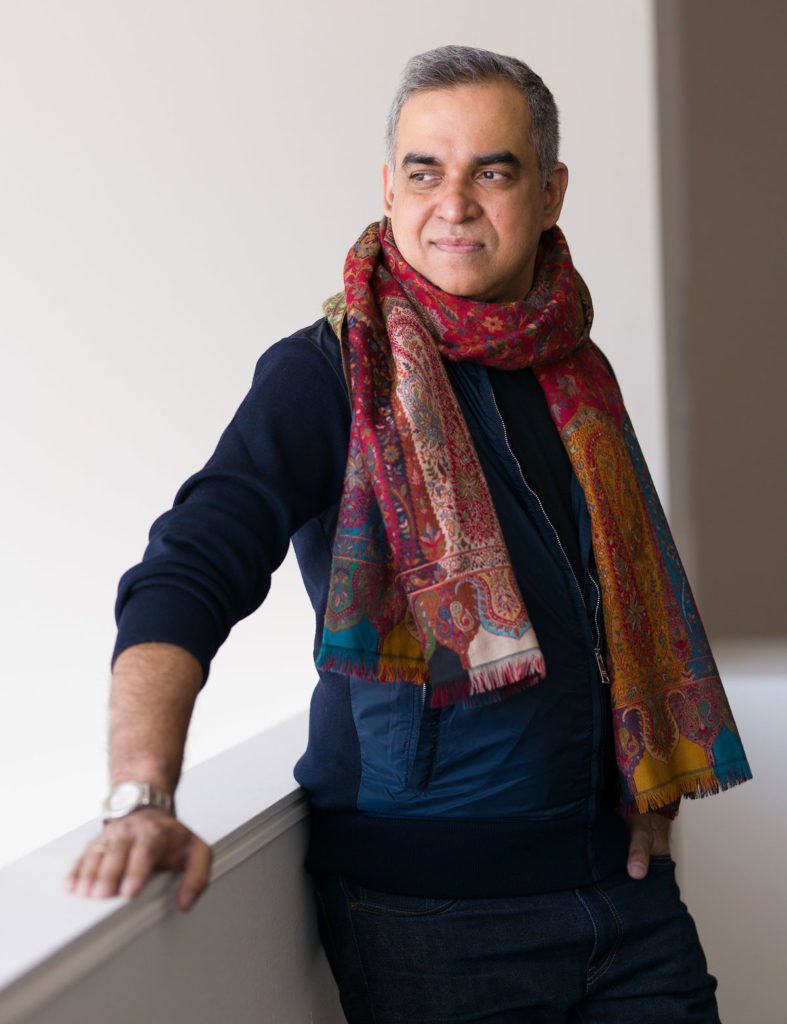
Confidence in oneself is the core of Mohapatra’s brand. Fashion is a tool people can use to communicate their perspectives, their heritage, and their autonomy. While he still experiences moments that knock him off kilter, Mohapatra can more easily course correct.
“But those moments come because that is the part of living,” he admits. “In order to be true to yourself you have to be that vulnerable and put yourself out there. Even putting a collection out there to be judged, like a musician or filmmaker does, that takes courage and conviction and confidence. I want young students to have that towards themselves and their lives.”
He is increasingly taking on mentorship roles with younger people, hoping to share the mistakes and successes that paved his path. He is also rethinking the future.
The pandemic forced many industries to change and the fashion world is no different. For Mohapatra, he is not interested in a simple return to the before times.
Mohapatra is mindful about what his team is creating and consuming. Moving forward, he aims to shine a light on the people who make his work possible, particularly the artisans weaving the cloth or creating the intricate embroidery his pieces often incorporate. It’s part of his mission to educate consumers to think beyond one season with their purchases and learn what makes them unique.
“Our story is more authentic if we truly include people who contributed to the process,” Mohapatra explains. “I could go to a small village in Turkey and find a craft and say I made it and put in my collection. And if I don’t talk about that culture and those people who have been preserving it for hundreds of years, that is plain wrong. That is irresponsible. That is selfish. And that is not authentic. It’s appropriation. … Brands have done that for decades without paying due. To me, that is the most interesting part of the whole thing. If something speaks to me, I want to make sure that I speak about it.”
He is candid about the brand’s shortcomings, too. They are not a 100% eco-friendly brand — far from it. But they are working towards a more sustainable operation. But it will take time for the vision to filter down into their suppliers and their practices.
“Patience is crucial if we are going to make change,” Mohapatra says. “We can’t sort of demand it happens overnight, especially if it’s about a community, about an industry, about a business.”
He is also keenly aware that part of his success involves listening to his critics. Because just as he has a point of view that is valid, so do they. Discerning how to grow from feedback and when to tune it out takes experience and the benefit of having a strong sounding board (like Bobby).
“We have to be open,” Mohapatra says.
Not everyone will clap for you. The key is knowing when to clap back. And when to let it go.
“Thanks to social media, if people know of you a little bit, you are also that much more vulnerable because opinions will come flying back that much faster,” he says. “I am not scared of that. Because I have my point of view, what I believe in, and I am going to stick to that.”
By Kristen Munson
Photos by Levi Sim
Video by Taylor Emerson



